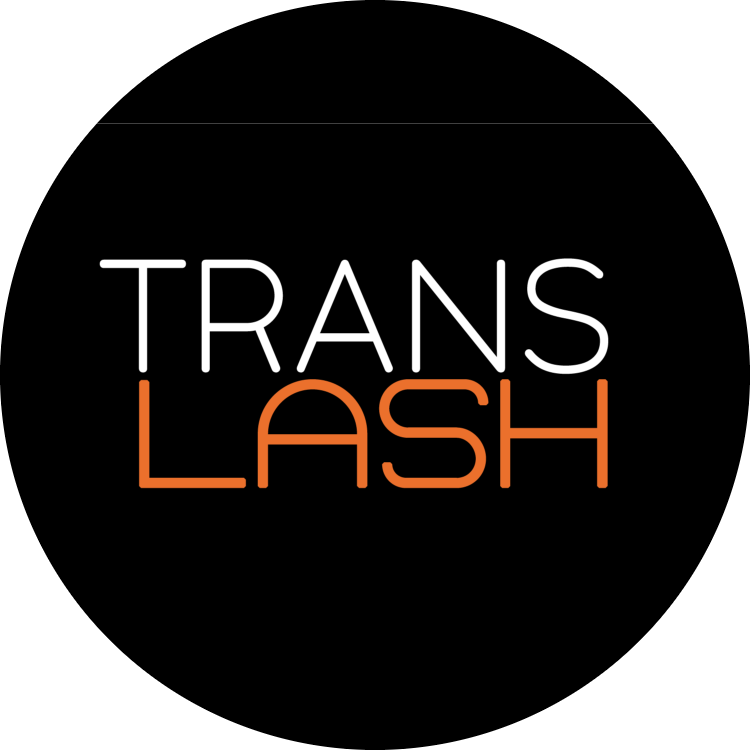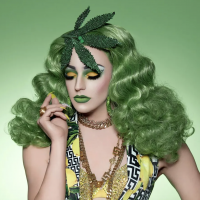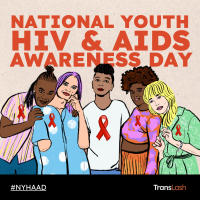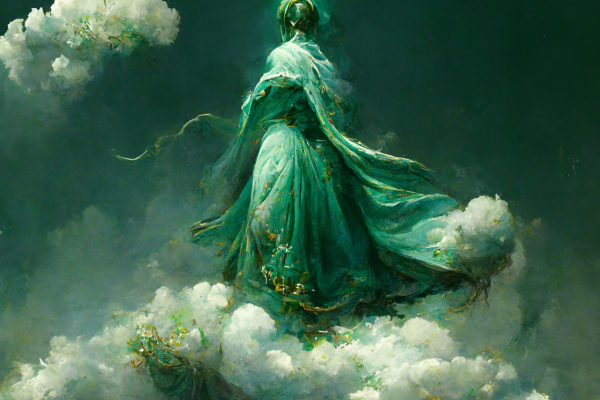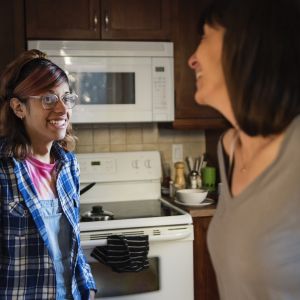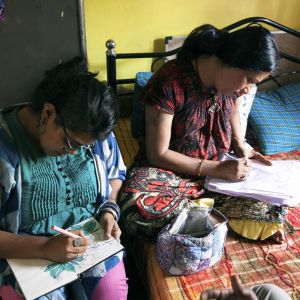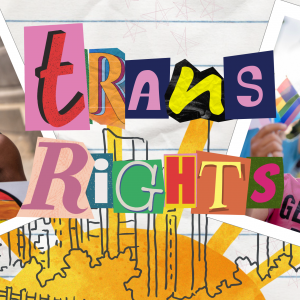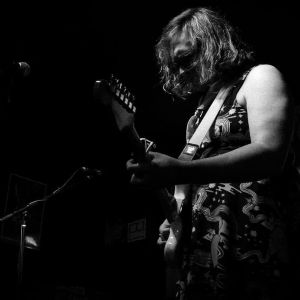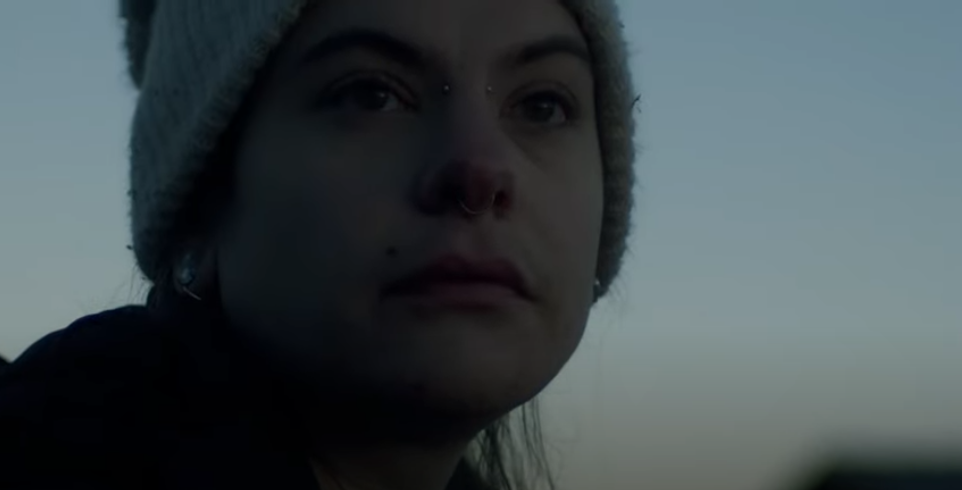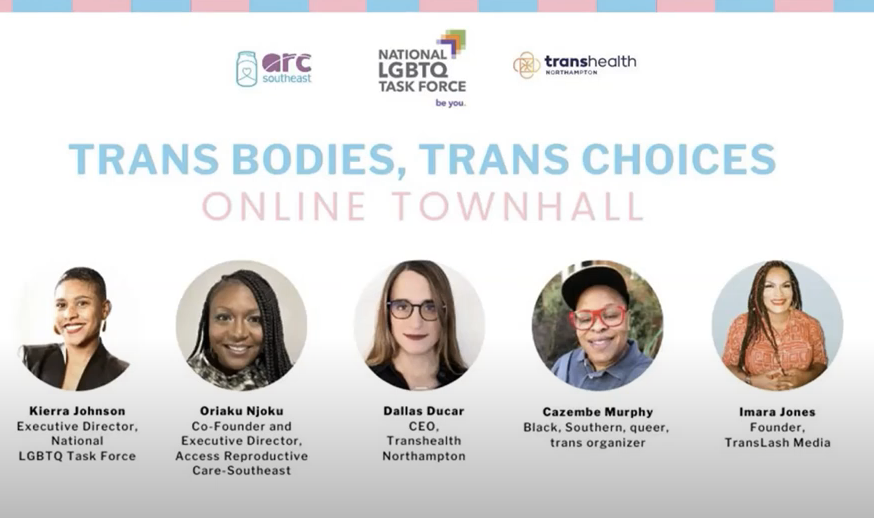By Sara Youngblood Gregory
I first came across artist Beau McCall’s work through the Stonewall National Museum Archives and Library website (SNMAL). Located in Fort Lauderdale, Florida, SNMAL is one of the largest queer archives in the United States — and the upcoming home of the REWIND: HISTORY ON REPEAT exhibition. The exhibition started as a collaboration between McCall and curator Souleo, who served as guest editor for McCall’s debut artist book REWIND: MEMORIES ON REPEAT. This collaboration between Souleo and McCall, both personal and professional, would eventually lead to the exhibition which features McCall’s collage work and archival material from the Stonewall Library.
REWIND: HISTORY ON REPEAT spotlights Black LGBTQ+ experiences from the late 1970s to mid-1990s, and in particular, pays tribute to now-passed members of McCall’s chosen family. The exhibit is a snapshot of life during the era McCall remembers as a time of disco, the AIDS crisis, the LGBTQ+ rights movement, and anti-trans violence. Layering McCall’s personal photos, button embellishments, and archival materials, the exhibition is an invitation for all generations to feel empowered as they reflect on the past, present, and future of Black LGBTQ+ communities.
TransLash spoke with McCall and Souleo about the exhibit, their shared artistic vision, and how we can draw strength from queer lineages.
TransLash: Can you tell us a little bit about yourselves?
McCall: I am Beau McCall from Down South, Philadelphia. I am a self-taught button artist. My journey started many moons ago, over forty years to be precise, with a jar of clothing buttons in my mother’s basement. I saw the buttons just sitting there and talking to me. Eventually, I began to create wearable and visual art using buttons. That’s why they also call me The Button Man.
Souleo: I am a creative, curator, impresario, consultant, and muse. It sounds like a lot to digest but it’s really all about using creativity to tell stories (mainly underrepresented narratives) whether that is through exhibitions or public programs or writing. Oh, and I’m one of those rare New York-born and-raised individuals, you know, like the disco song.
TransLash: Beau, can you talk about how you came to work on REWIND: MEMORIES ON REPEAT as a book? What was the artistic process like for you? How did the book evolve into an exhibit at the Stonewall Archives?
McCall: Nick Kline at Rutgers University’s SHINE Portrait Studio Press offered Souleo the opportunity to do an artists’ book. At the time, Souleo didn’t want to do a book about his experiences so he asked if I was interested and if he could edit the book. I thought about it for a minute and started reflecting on my core group of friends, or as I call them, my chosen family. They are all deceased. But mentally and spiritually I am still holding onto the memories of our time together. So I wanted to honor them in the book.
The day before I began to work on the book my closest friend, Tracy, passed away. So it made it very difficult to begin because I had to mourn that loss. But in many ways working on the book while mourning was also cathartic. I was able to reminisce and reflect on how important these friendships are to me.
In terms of the artistic process, I created the collages by hand using my historical photographs (mostly shot by me), archives, and detailed images from my actual wearable and visual artwork. Before social media and camera phones, I always had a disposable camera at hand in my pocket or bag. I would document all the things me and my friends were doing whether we were just hanging out at a club or putting on makeup. My friend in the book, Antoine aka DeeDee Somemore called me “picture crazy.” But at some point, I knew I was gonna utilize all the information I collected. I just didn’t know how I would use it.
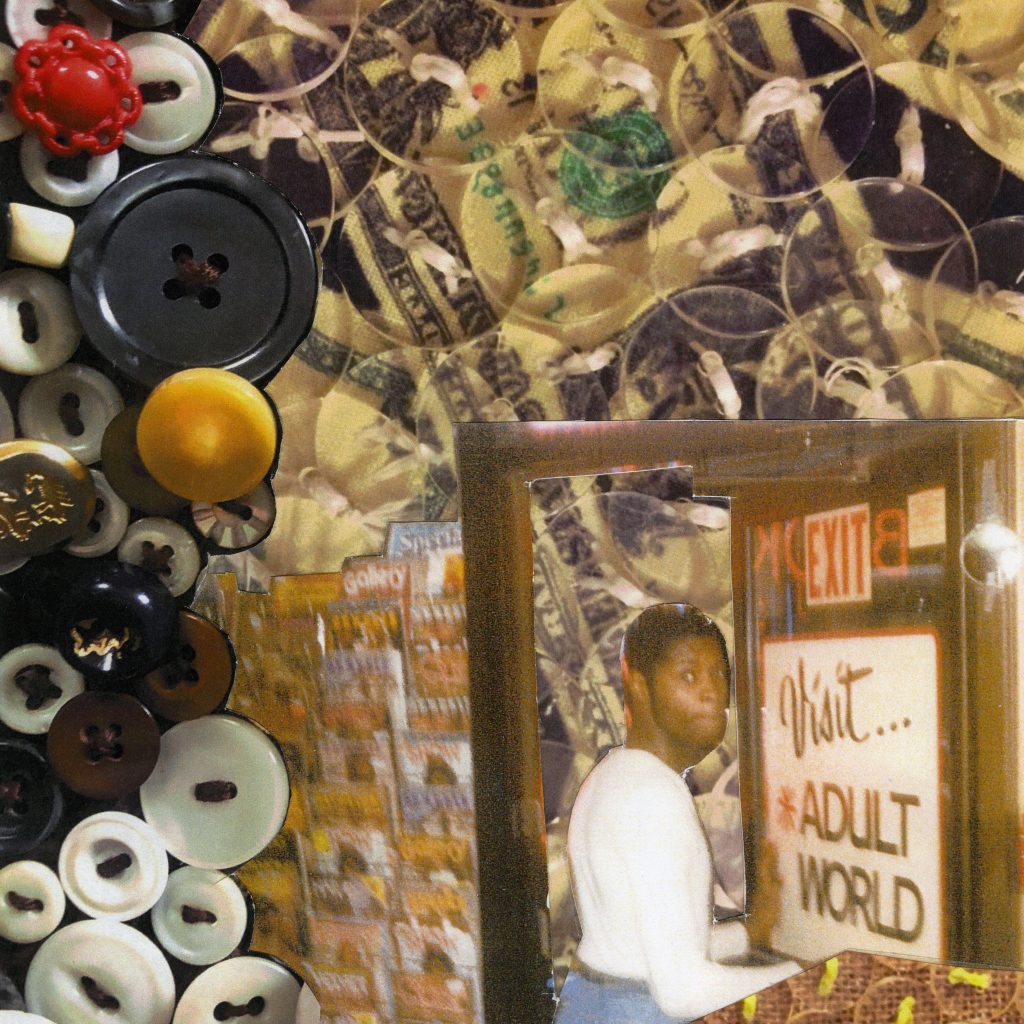
The photographs I selected are heartfelt, joyous, and fun. For example, the image of me and Saifuddin Muhammad at the Patti LaBelle concert is one of my favorites. I remember us being in the lobby at the Forrest Theatre in Philly. This photographer came up to me and saw I had a photo of Patti in the breast pocket of my blazer. He asked to photograph us and we said yes, not knowing where the image would end up. The next day we were in the Philadelphia Daily News and we got 15 minutes of fame off of that photograph.
The book and the exhibition are full of such special moments. The exhibition was a vision me and Souleo had from the beginning when we first started working on the book. We both agreed that Stonewall National Museum, Library, & Archives (SNMLA) was the perfect place to launch the exhibition.
TransLash: REWIND: HISTORY ON REPEAT functions like a personal tribute and memorial, as well as evidence of life in the 70s-90s. What do you want people to understand about the friends who inspired this art? About this period in time?
McCall: I want people to understand that true friendship never dies. At some point, we all reflect on the past because your past has a lot to do with the current state of who you are. Because of my experience with my friends, I am who I am today. I’m grateful for them being in my life. This time period, despite its struggles, was also joyous. I had the time of my life with them. It made my life easier with these particular folks that I welcomed in as my chosen family. They were all unique, talented, and we all had something to offer each other and the world. So I really want people to know how special these individuals were and to reflect on the friends in their lives and to be thankful for those bonds.
TransLash: Souleo, can you describe a little bit about your process working as both an editor and curator for this collection? How did you and Beau begin working together?
Souleo: We started working together really from the beginning of our romantic relationship about thirteen years ago. But it was during the COVID-19 pandemic when I officially became a consultant and started representing him. In terms of working on this project, I had to balance my role as his lover with my professional duties. There were times he would break down in tears of pain or joy reflecting on his friendships. So I had to lend an ear and comfort him during those times as a romantic partner. At the same time, I had to keep us on track to make sure we hit our deadlines, I had to ask him a lot of questions to fact-check his memories as much as possible, and be objective enough to edit and curate the work even if it meant challenging him on certain aspects.
TransLash: The exhibit description notes: “…select collages are paired with an archival item from SNMLA that relates to the theme of McCall’s artwork. This pairing draws a parallel between the personal experiences of McCall and his friends and the larger historical moments that impacted their lives.”
Can you tell me about the historical and social contexts the exhibit speaks to?
McCall: One of the biggest historical moments that shaped our lives and the collection is disco. We were friends during the height of disco in the 1970s. I remember going out every Friday listening to incredible music and watching people do the Hustle dance. When we went to the club we were free and didn’t have the pressure of society with a magnifying glass looking down on us for being part of the LGBTQ+ community. Disco allowed us a space that was welcoming and open to people of all backgrounds and identities because the music connected us.
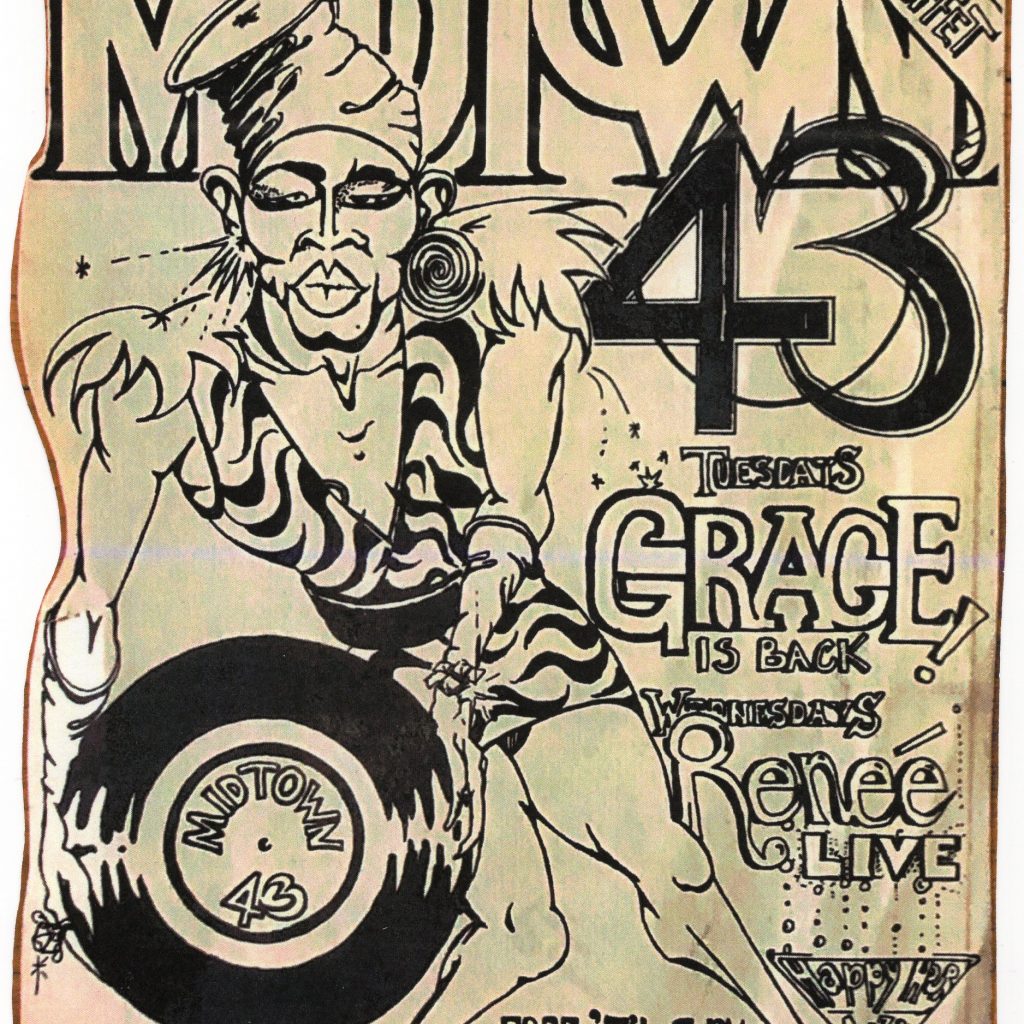
In terms of trans identity and expressions of gender, you have to remember that at that time we didn’t have the language we do today. There wasn’t a trans label for those who identified as such. You were just called a drag queen. In these disco clubs, I met individuals who were trans men and women. So that was fascinating to me because I was young and had never met a trans person. Seeing the confidence with which they carried themselves was inspiring to me. So the disco clubs created an environment where me and my friends felt safe enough to express ourselves in ways that were authentic to who we were and that challenged sexuality and gender norms.
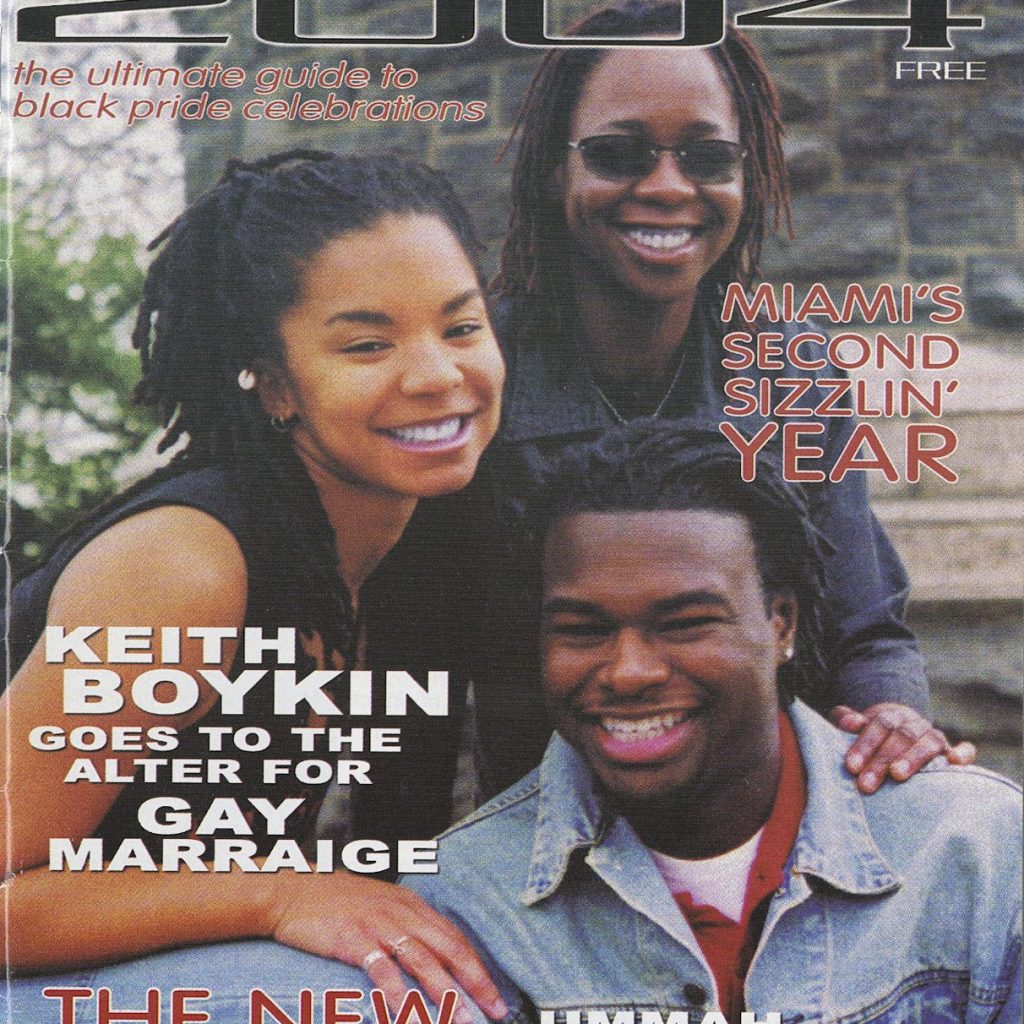
TransLash: Beau, you’ve said that “Since the 1970s we have lost so many individuals to AIDS, drugs, and anti-trans violence. So I wanted to tell some of these lost stories through images of my own friends who experienced these issues. It is my way of honoring my friendship with them and bringing greater visibility and representation to the unsung everyday people of the Black LGBTQ+ community.”
Can you talk to me about how the three forces you name — AIDS, drugs, and anti-trans violence — have shaped queer and trans lives broadly, the lives of your friends, and the exhibit?
McCall: AIDS was something that had a profound impact on my group of friends. Some of the images in the exhibition are from the height of the AIDS epidemic. I remember us all being on pins and needles as to who would be next to get AIDS and die. I’ve always been very particular about who I am intimate with so the fear of AIDS made me even more selective, which probably ended up saving my life. I remember each time when we would meet we’d hear of another person who died from the disease. In my circle, the disease kept getting closer and closer until it claimed the lives of some of my friends featured in the exhibition such as Antoine aka DeeDee Somemore, Joey aka Ericka World, and Saifuddin Muhammad. Mentally, it led me into a depression and I took about a ten-year hiatus from pursuing a professional creative career. I withdrew and became very guarded. After I started losing my friends I didn’t develop any new friendships in the LGBTQ+ community.
On a positive note, these forces have led to the creation of more organizations and activism surrounding the LGBTQ+ community. There are more spaces where people can share their stories and find support. We didn’t have as much of that back then. All we had was each other. I think we’ve made a lot of progress in terms of visibility and in public policy. Of course, there is still a long way to go and the struggle continues as we see by current political efforts targeting the LGBTQ+ community.
TransLash: When reading the exhibit description, I thought about what other generations of LGBTQ+ people might take from the exhibit, given our current political moment (and especially in Florida, where the Stonewall Archives are). Souleo, what do you hope people will take from the exhibit?
Souleo: I hope people walk away inspired on several fronts. In the queer community, some are rejected by members of their own families. So to be able to choose your family and have that support is very important. And we need to uplift those bonds as much as possible to add an alternative to the dominant traditional family narrative.
I hope people walk away inspired with an appreciation for Black LGBTQ+ experiences. Within our own queer community, the Black experience and those of other similarly oppressed groups have been underrepresented. And when there is a spotlight it focuses on the same set of names. But with this project, we are sharing the everyday Black queer perspective from individuals who were surviving and living and trying to figure out life together. Along the way, some of them made important cultural contributions that deserve greater amplification and placement in the canon such as Moi Renee’s music and Beau’s artworks.
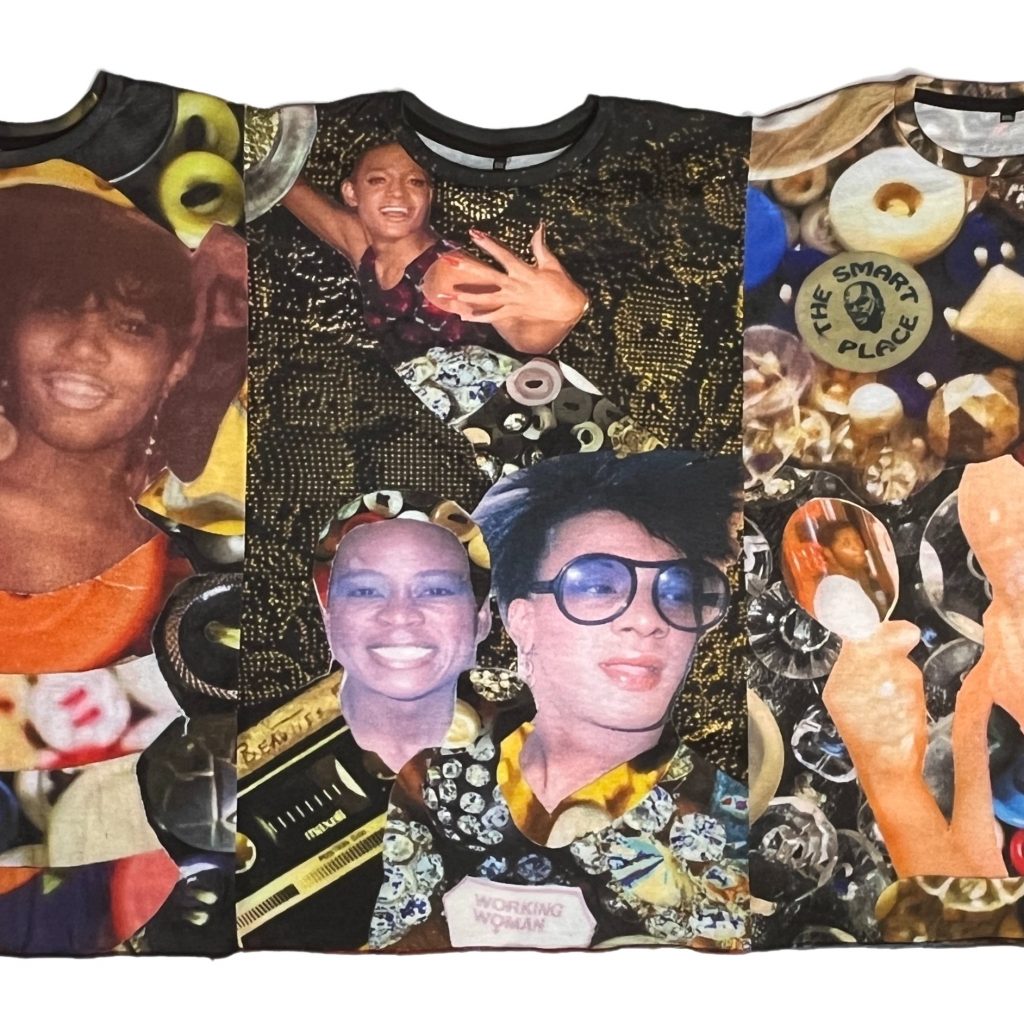
I hope people are inspired to do as Beau did and start their own personal archives and eventually have them acquired or donated to institutions such as SNMLA. It is collections like these that add that emotional and human perspective to our collective history. In particular, this is also how we can expand archives to be more representative of Black LGBTQ+ experiences.
And finally, I hope people are inspired to take political action in one way or another by voting, signing petitions, donating to causes, or whatever it may be. The exhibition arrives during a time when LGBTQ+ rights are under assault in Florida and across the country with numerous bills introduced to restrict access to LGBTQ+ books and lessons in educational settings. That’s why I’m honored to curate this exhibition at SNMLA, because it is spaces like this where we are able to share important stories such as that of Beau’s chosen family.
All Photos Courtesy of the Artist.
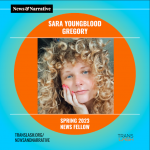
Sara Youngblood Gregory (she/they) is a non-binary lesbian journalist and writer. She is the author of THE POLYAMORY WORKBOOK and a former staff writer for POPSUGAR. She covers sex, queerness, disability, culture, and wellness. Her work has been featured in Vice, Teen Vogue, HuffPost, Bustle, DAME, Cosmo, Jezebel, and many others.
Sara serves on the board of the lesbian literary and arts journal Sinister Wisdom. As a poet, Sara has been nominated for a Pushcart Prize, Best of the Net, and Best New Voices. She’s also attended the Kenyon Review Workshop in 2019 and 2022, as well as a Winter Tangerine poetry workshop. Her chapbook RUN. is out now.
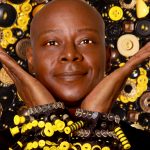
To learn more and support Beau McCall’s work, visit his website.
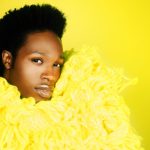
To learn more and support Souleo’s work, visit his website.


